Delicious Thai fruits that will delight your taste buds
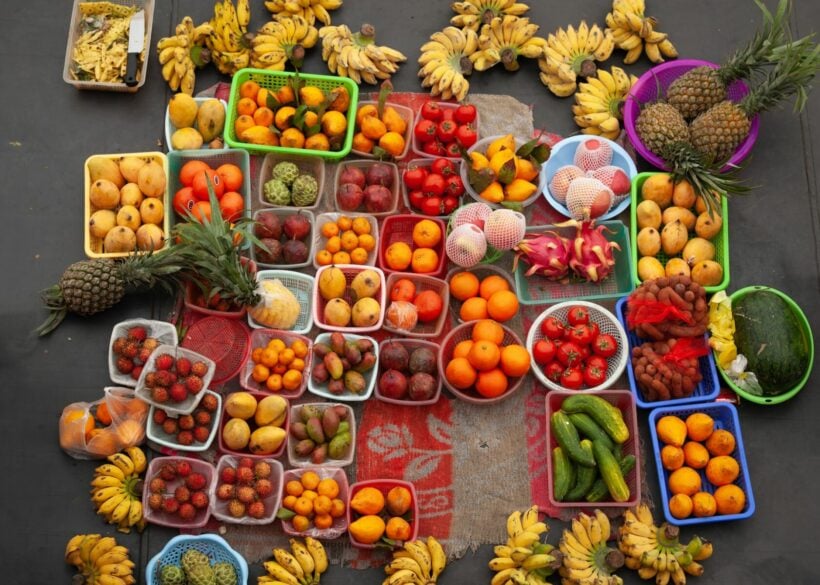
Blessed with a hot tropical climate and fertile plains, the Thailand boasts the perfect environment to produce exotic and tasty fruits and vegetables. Everywhere you go in the country, you’ll come across plenty of fruit stands offering different varieties of interesting and delicious delights. The tropical Thai fruits are a feast for the eyes and taste buds. They come with striking (sometimes bizarre) colours, textures, shapes, and sizes. Not only are they tasty and healthy, but also very cheap!
Make the most of your time in Thailand and please your senses by discovering as many tropical fruits as you can. Here are the most delicious tropical fruits you need to try in Thailand
1. Mango (Ma Muang)
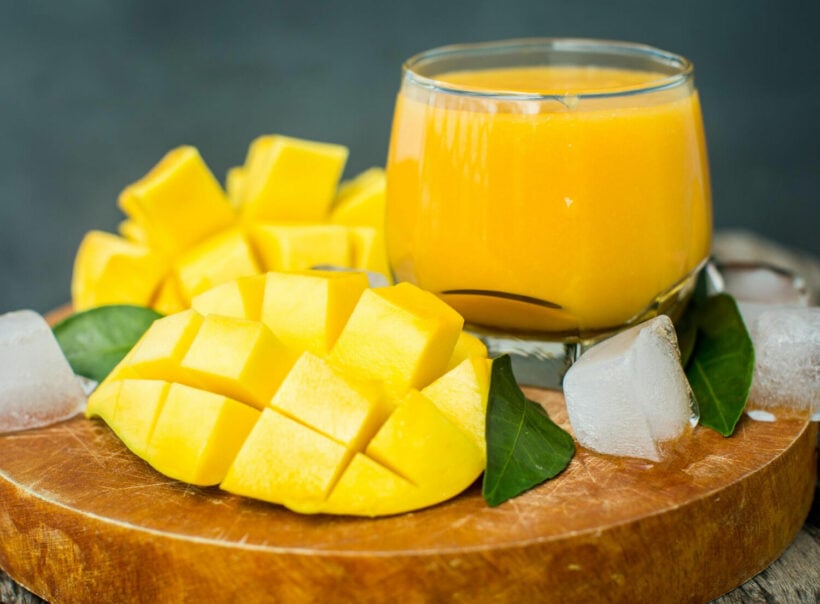
Mango is a staple in many Southeast Asian countries, including Thailand. This refreshing fruit dominates Thailand’s food scene like no other tropical fruit can – even the capital is nicknamed after this fruit (The Big Mango). It’s regarded as the culinary holy grail for the summer by both locals and tourists. You can find many varieties of this fruit in Thailand, as well as numerous different ways of eating it.
When fully ripe, the fruit is juicy with brightly yellowed flesh. You can easily halve it and eat it with a spoon to enjoy it as its own. However, the more popular way to enjoy a fully ripe mango is to eat it with sticky rice and coconut milk – known as Khao Niew Ma Muang or Mango Sticky Rice. The slightly salty coconut milk and sticky rice complement the sweetness of the mango, making it one of the most delicious desserts you’ll ever try in the country.
When half-ripe, mangoes have a sour flavour. People usually dip the crunchy slices in sugar, salt, and chilli as a savoury snack. Some people also love tart green mango and enjoy it as a sweet and spicy salad (Som Tum Ma Muang).
2. Durian (Tu Rean)
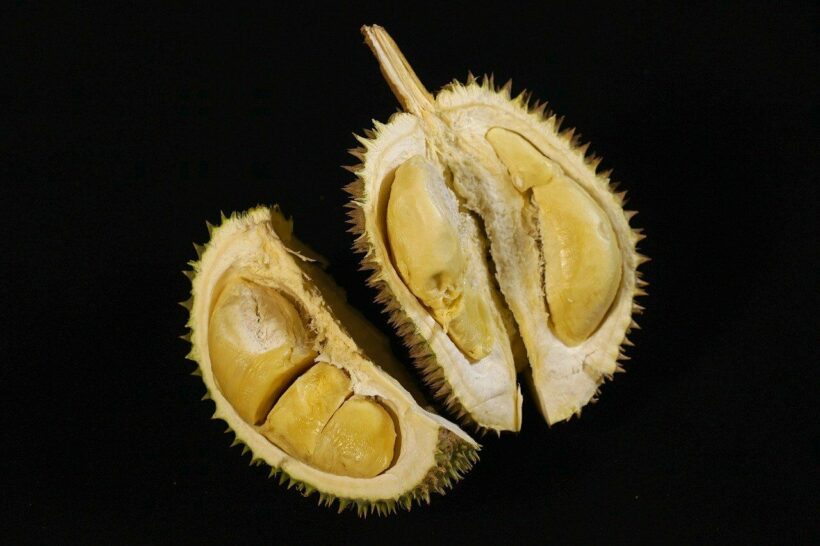
Durian, or the King of Fruit, is possibly the most controversial food in the world. While many people despise this fruit, others swear by it. It looks dangerous from the outside with its short and greenish spikes. On the inside, you’ll find a golden yellow flesh that might not seem appealing as well. The appearance, however, is the least of its worries. The bad reputation that this fruit has mostly come from its foul smell. In fact, the smell is strong enough to get it banned from some public parks, businesses, and hotels.
Most westerners can’t stand the strong smell of durian. But don’t let that scare you; it’s called ‘the King of Fruits’ for a good reason. Durian is often considered a superfruit because it’s naturally rich in vitamin C, potassium, and iron. If you’ve never tried it before, make sure to try some during your visit to Thailand. You either absolutely hate it or love it – it’s that simple. If you can’t stomach the raw fruit, you can try durian candy, durian chips, or even durian ice cream as a start.
Those who love durian usually say that the fruit has a pleasantly sweet fragrance. Durian lovers find the fruit to have a sweet and custardy taste, with the texture of creamy cheesecake. It’s sweet, creamy, and savoury all at once. The flavours are often attributed to vanilla and caramel. Be careful not to eat too much of it and avoid eating durian and drinking alcohol at the same time.
3. Rambutan (NgoR)
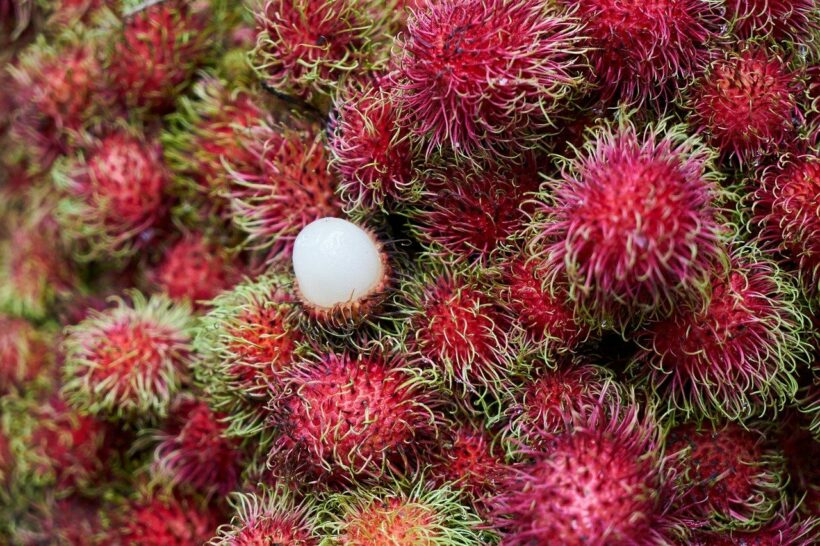
The name ‘Rambutan is derived from the Indonesian/Malay word rambut, which means ‘hair.’ It’s called Rambutan due to its red-and-yellow-spiky rind, which resembles hair. In Thai, the tiny red fruit is called NgoR. The hairy appearance might be strange for some people, making them shy away from this fruit. However, make sure to give them a chance as the inside is actually delicious The white translucent flesh inside is sweet and cool, with a slightly acidic taste. Like many other tropical fruits, you can usually find Rambutan all year round. However, the best season for this tropical fruit is generally between May and September.
4. Mangosteen (Mang Kut)
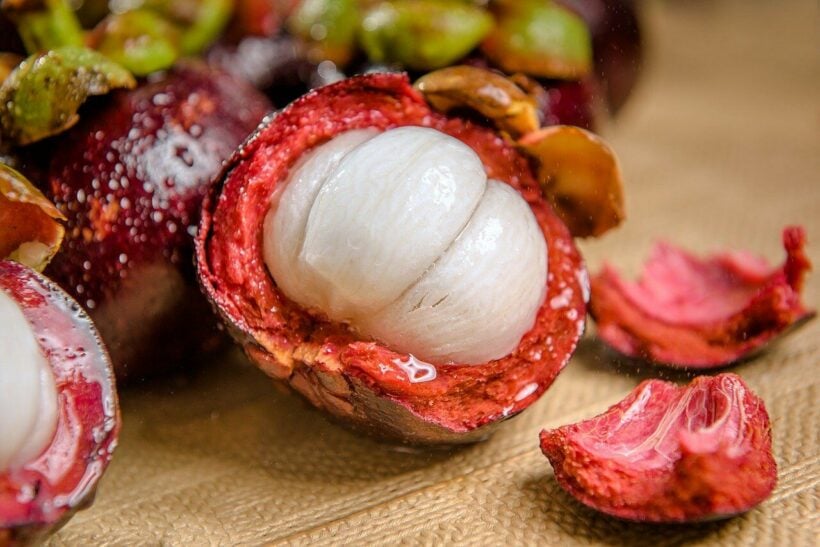
If Durian is the king, then mangosteen is the queen of all fruits in Thailand. It might not be very popular outside Southeast Asia, but it’s very famous in the Land of Smiles. This bizarre-looking fruit comes with a hard purple shell, which can easily be peeled away to reveal 5 to 8 segments of soft flesh inside, which is sweet, tangy, and juicy. Mangosteen has been used as traditional medicine in numerous Asian countries for a long time. The fruit is believed to have major benefits to reduce the risk of inflammation, allergies, diabetes, and even cancer. The fruit can also help maintain healthy skin and may promote weight loss thanks to its rich supply of nutrients, antioxidants, and fibre.
5. Rose Apple (Chom-Poo)
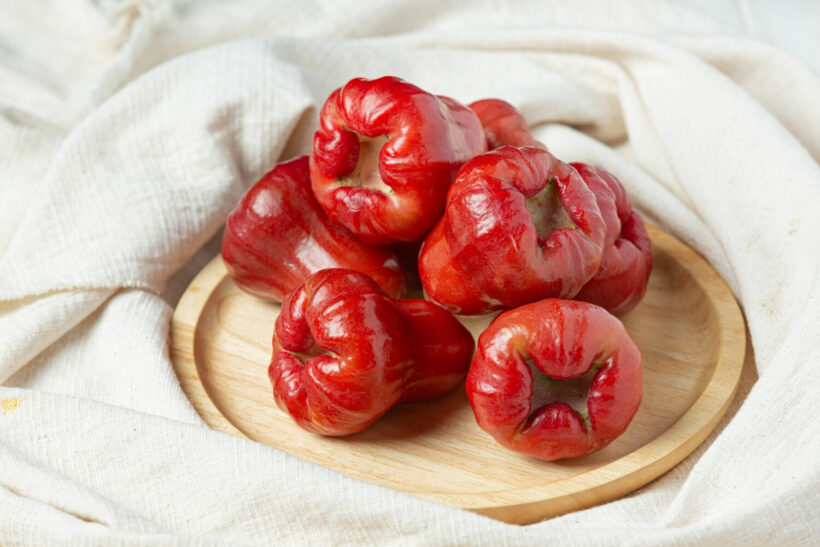
Rose apple is a bell-shaped fruit that resembles a pear, but the skin is quite waxy compared to pears. When you cut a rose apple open, the core is more or less hollow, with a bit of cottony fluff that should be discarded before you eat the fruit. You eat rose apples with the skin and all. It has a light and crispy texture that is airy, watery, and juicy, similar to a very moist apple.
The flavour of the fruit is a bit hard to explain. There’s a hint of sweetness, but with a slightly bitter after-taste. When it’s overly ripe, the taste can be a bit acidic. Although you can eat it on its own, most Thais eat it raw with salt and spice or mixed in a spicy salad. There are several varieties of rose apples in Thailand, but the most common in Thailand are the ones with red or light green skin. It’s a very refreshing fruit, especially on a hot day!
6. Jackfruit (Khanoon)
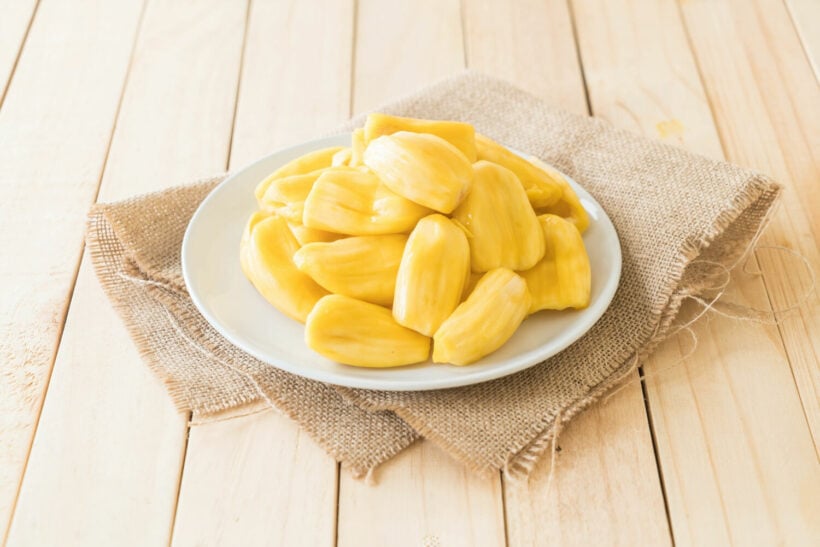
Although jackfruit looks similar to Durian, they’re totally different. Jackfruit is more enormous, without sharp spines on the skin. It also doesn’t smell horrible. Weighing in at 20 to 30 kilos, Jackfruit is easily one of the biggest tropical fruits in Thailand. The fruit is divided into multiple sections, each of which contains yellow waxy meat surrounded by seeds. The yellow waxy meat has a distinctive sweet aroma with floral notes, a succulent and sweet taste, and chewy consistency.
Ripe jackfruits typically have golden yellow flesh instead of pale yellow. You can eat it raw on its own or with desserts like ice cream. However, some Thais also like to fry it in a batter. Jackfruit can also be eaten when it’s young and unripe, usually to substitute meat in recipes like curries, stir-fries, and BBQ pulled ‘pork.’ Due to its size, shape and sap, it’s not easy to cut jackfruit by yourself. Fortunately, you can find ready-made pack jackfruits at the market.
7. Pomelo (Som-O)
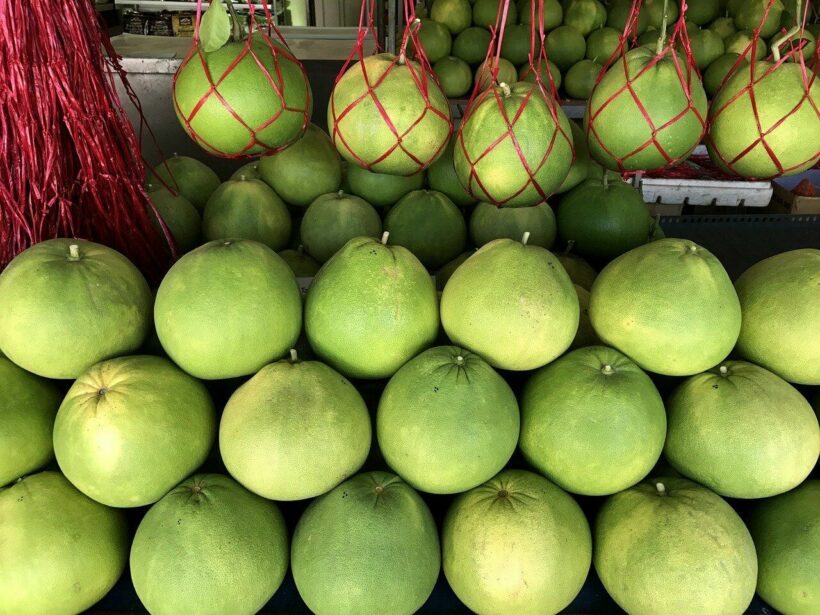
Pomelo is the largest citrus fruit and one of the most popular in Thailand. It’s very similar to grapefruit, with a thick and leathery rind. . The flesh of a pomelo is firmer in texture than other citrus fruits and without the messy juice. Therefore, it’s easier to eat with your hands without getting juice everywhere. It can be both bitter and a bit sweet but less acidic than other citrus fruits. You can eat pomelo fresh on its own or with salt and/or a spicy dip. Pomelo is also used as one of the main ingredients in savoury dishes in many traditional Thai dishes.
8. Lychee (Linjee)
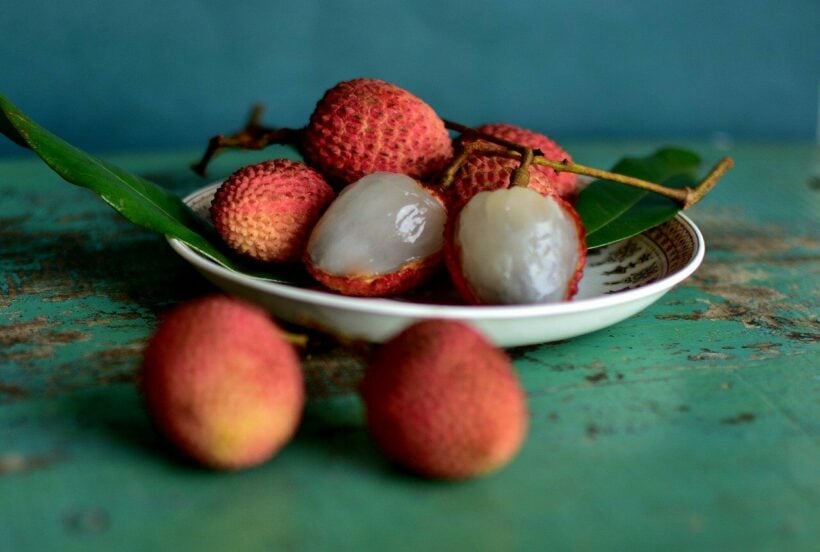
Lychee is very similar to rambutan. It’s bright red and has the size of a golf ball, but instead of hair, the rind is roughly textured. The rind is inedible, but you can easily remove it to reveal a layer of pale, translucent flesh with the texture of a grape. The translucent flesh covers a single brown nut-like seed, which shouldn’t be eaten. You can eat them fresh, but you’ll also find that the fruit is used in many drinks, ranging from tea to martinis. While lychees are only available for a few months each year, usually from July to October, you can easily find canned versions of the fruit all year round.
9. Sapodilla (Lamut)
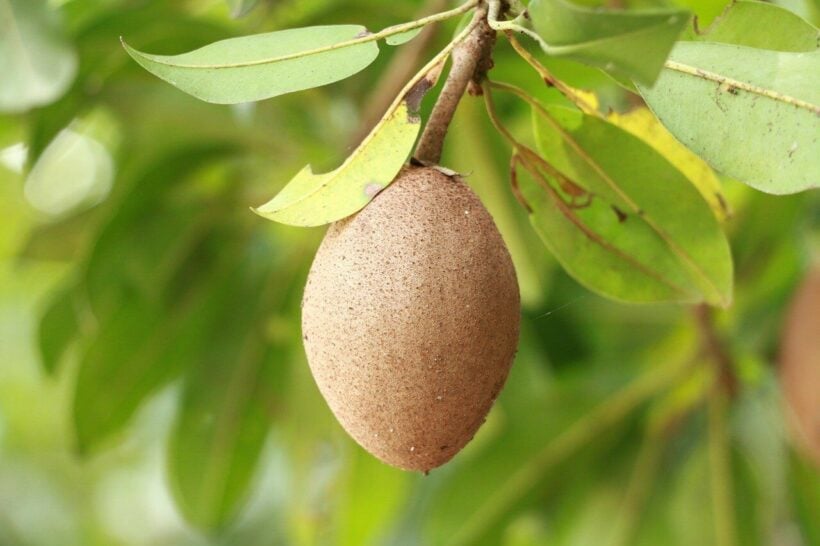
With a dull and pale brown skin that resembles potatoes, sapodilla might not be the most attractive fruit you’ll see. However, it’s among the sweetest fruits you’ll find. Although the outside is rather uninteresting, you’ll find a soft, slightly gritty, honey-flavoured flesh on the inside. To eat sapodilla, simply peel away the skin with a knife, then take a bite. You can also slice the fruit in half to eat it with a spoon. Be sure to avoid the seeds. In Thailand, sapodilla is often carved into decorative shapes.
10. Longan (Lam-Yai)
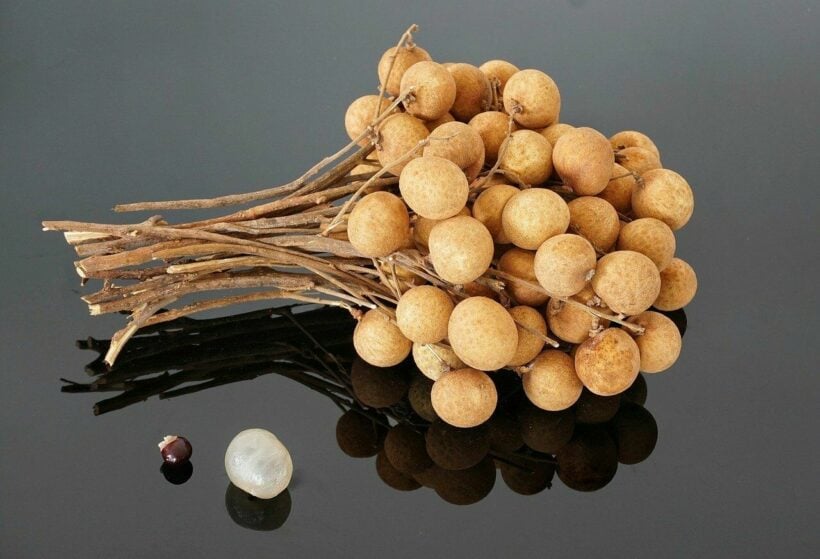
Longan is the lesser-known sibling of rambutan and lychee. Unlike lychee and rambutan, the shell of longan is thin and brown instead of red and textured. You can find Longan in many places across Thailand. However, the fruit is mainly grown in the northern part of the country. Longan is sometimes called the ‘Dragon Eye Fruit’ because the flesh is more translucent than rambutan and lychee, and the seed is black, giving it that “eye” resemblance.
11. Coconut (Ma Praow)

Coconut is one of the most popular fruits in the world. However, trying fresh coconut in Thailand is a must. Thai coconuts are way more tasty and cheaper. Besides, Thais do things differently, and coconut is a vital part of Thailand’s culinary culture.
Since coconut is a very versatile fruit, it’s used in everything from curries to ice cream in Thailand. You can enjoy fresh young coconut on its own – cut the coconut open, scoop out the soft flesh on the sides with a spoon, then drink the juice. It tastes delicious and refreshing, and you can find it almost everywhere on Thai islands! Aside from enjoying raw coconut on its own, coconut is also used as one of the main ingredients in numerous Thai dishes, in the form of coconut milk.
12. Passion Fruit (Sawa Rod)
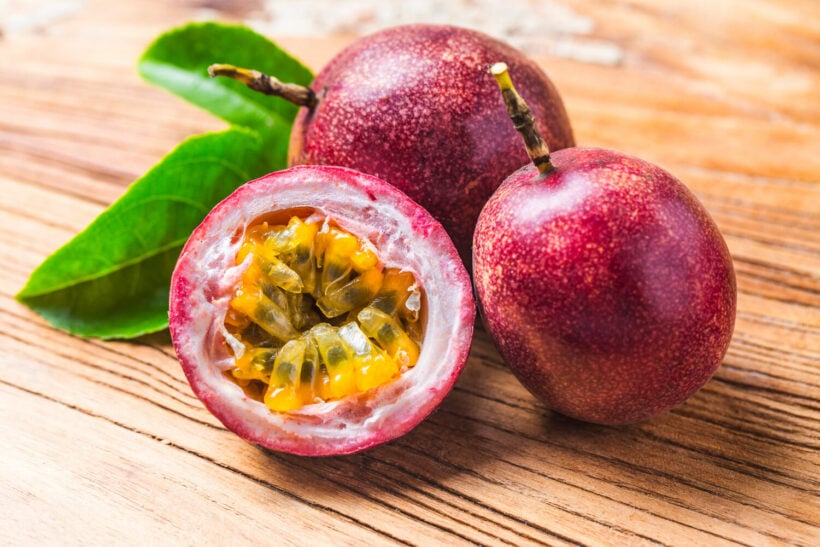
With hard, wrinkled skin, passion fruit might look like a weird egg. However, it’s actually one of the most delicious tropical fruits. Inside its hard shell, you’ll find yellow flesh-covered seeds. The flesh is jelly-like with a strong tropical smell and refreshing taste. The flavour can range from sour to very sweet, with a hit of citrus. While you can easily scoop the flesh and seeds out with a spoon to eat raw, the fruit is rarely served on its own. You can usually find them served in drinks, desserts, or topped on other fruits. No matter how you enjoy it, be sure to avoid biting into the black seeds as they’re hard, crunchy, and flavourless.
Passion fruit isn’t a native Thailand fruit, but you can find it in a lot of places across the country. There are several varieties of this fruit, with purple, green, and yellow passion fruits as the most common.
13. Langsat (Langsard)
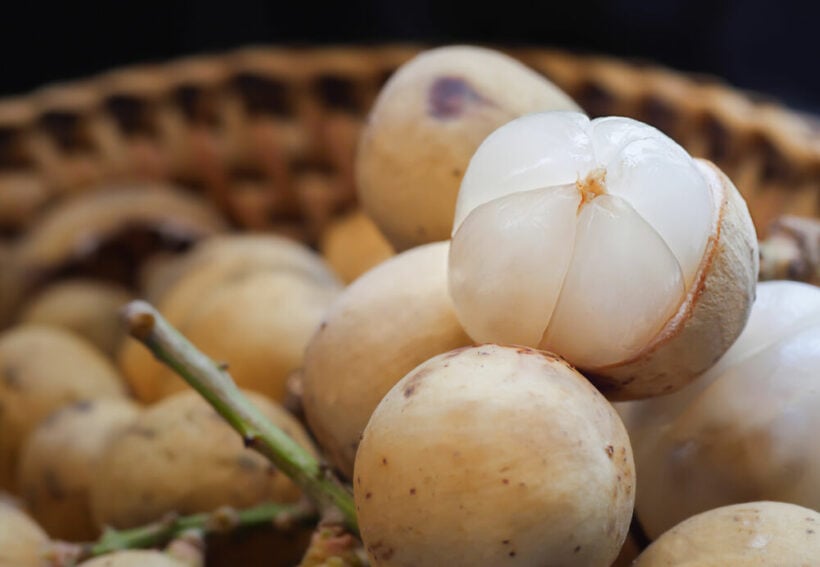
From the outside, langsat looks very similar to longan. Both are small, round, with thin brown skin. However, the two are actually very different. The skin of this tropical fruit is typically softer and more rubbery than longan. When you peel it off, you’ll find translucent segments of fruit. The flesh is juicy, with a sweet and slightly tart flavour. Eat each segment individually instead of eating them all together because each segment has its own seed. Most seeds are soft, so you can eat and swallow them. However, make sure to spit out bigger seeds and don’t bite them as they can taste very bitter and unpleasant.
14. Snake Fruit (Sala)
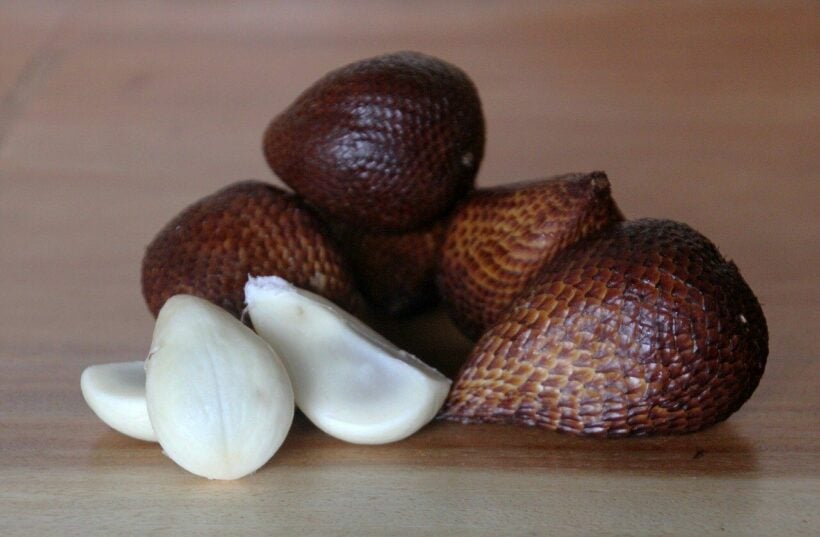
Snake fruit is a strange fruit with scaly and reptilian-looking skin, hence the name. The skin is hard and brittle, so opening it can be a challenge and requires some creativity. The easiest way to peel off the skin is by pinching the top of the fruit. Once you crack it open, you can find white lobes of flesh that are weirdly sweet and tangy. It has a citrusy, astringent flavour that leaves your tongue tingling like a pineapple. The flesh is firm, with a crunchy texture that is similar to apple and garlic. Some varieties are dry and flaky, while others are juicy and sponge-like. Be sure to eat around the hard seeds because it’s inedible.
The most popular way to enjoy snake fruit is by eating it raw on its own. However, some Thais like to dip their snake fruit into sugar, salt, and spice mixture.
15. Custard Apple (Noi Na)
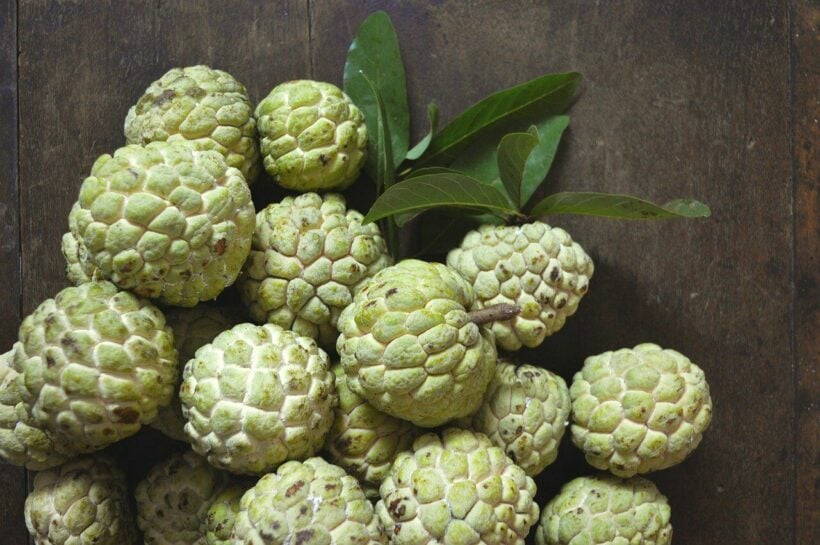
Custard apple is among the most strange-looking tropical fruits in Thailand. This tennis ball-sized fruit has a light green colour, with unique and knobbly skin. To eat custard apple, divide the fruit in two with your hands or a knife, then scoop the insides with a spoon. The flesh is sweet, with a mushy, custard-like texture. You’ll find that it has a lot of tiny black seeds, which aren’t edible, so be sure to spit them out.
Of course, you can find these fruits anywhere else in the world. But they taste better when they’re still fresh from the trees, especially when you’re in the right season. So be sure to try them during your stay in Thailand!
Wondering how to open these fruits? Do it the easy way using our guide HERE.
Latest Thailand News
Follow The Thaiger on Google News:


























